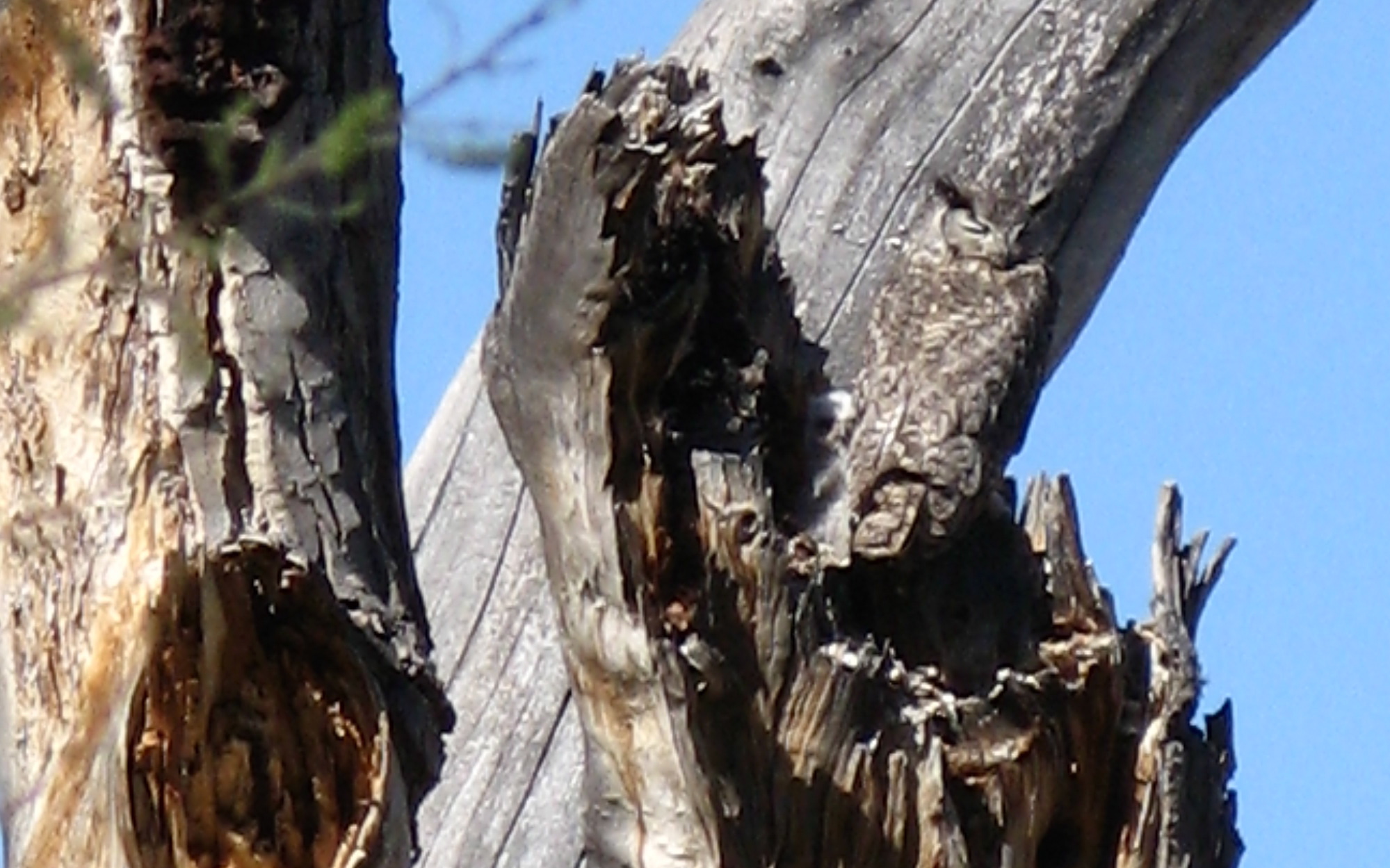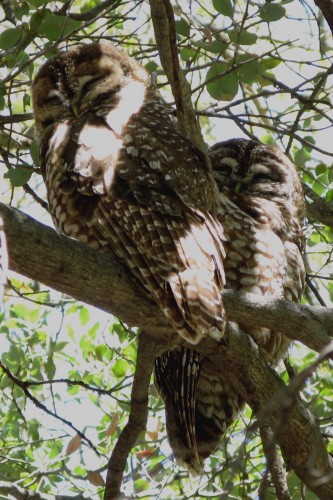Vertical Napping Bark: it’s hard to see an owl
My friend Kate McKinnon recently posted that she has a hard time seeing owls in the wild, and she takes it personally. Well she should, because an owl’s Primary Goal other than to eat something, is to escape detection, by you, by me, by a thoughtless human with a crossbow, by the other bigger owl, by sharp-eyed prey, and by Kate McKinnon. We are all of us intended to Not See Owls.
Owls have many tools for escaping detection: cryptic coloration, shifting outline often modified with cranial feather tufts, motionless roosting, self-effacing habits, and nearly silent flight. They are chromosomally adept at Hiding in Plain Sight.
 Seeing an owl is a lightning bolt, a mistake, a gift, a shock, a plot by crabby song birds. A sighting is usually because someone who knows where an owl day-roosts points it out, or we hear one call and get a glimpse as it glides across a dark sky, or because wrens and chickadees and jays fink it out. If the owl is seen, a small owl will shrink or stretch, and squint to hide its telltale eyes; a big owl might merely turn its head, or not, because though it prefers to not be seen, it isn’t too worried since you cannot fly. If you spot an owl don’t point or wave the hands, it might make it flee. If you remain still and quiet, they often will too, allowing a few photos, especially if they are rock stars like certain Mexican spotted owls in southeastern Arizona, who frequently host googly-eyed camera-toting visitors like me in their woods.
Seeing an owl is a lightning bolt, a mistake, a gift, a shock, a plot by crabby song birds. A sighting is usually because someone who knows where an owl day-roosts points it out, or we hear one call and get a glimpse as it glides across a dark sky, or because wrens and chickadees and jays fink it out. If the owl is seen, a small owl will shrink or stretch, and squint to hide its telltale eyes; a big owl might merely turn its head, or not, because though it prefers to not be seen, it isn’t too worried since you cannot fly. If you spot an owl don’t point or wave the hands, it might make it flee. If you remain still and quiet, they often will too, allowing a few photos, especially if they are rock stars like certain Mexican spotted owls in southeastern Arizona, who frequently host googly-eyed camera-toting visitors like me in their woods.
Here are some things to do if you wish to see an owl: put up a nest box; go on an owl prowl (check Audubon groups and raptor education outfits in your area); keep your ears open; look for owl pellets and whitewash under horizontal boughs close to the trunk; inspect the tops of saguaros at dusk; look in every tree/cactus hole you know of that’s above head height; go into the woods at night; watch the news (urban owls often wind up on TV, like the famous Scottsdale Safeway Urn-nesting Great horned owls); make secret offerings to the Great Owly Entity. But remember, owls’ desire to escape detection is greater than our ability to find them. Good luck, and Good Owling.
photos by A. Shock: Great horned owl with downy chick manifesting as barkless tree skin, San Pedro River, AZ; Mexican Spotted owl pair manifesting as dappled sunlight through branches, Huachuca Mountains, AZ.

[…] Spotted owls of Scheelite Canyon>> […]
It took me two tries to spot that Great Horned with chick! In the Northeast, we have Snowy Owls disguised as lumps of snow: http://www.flickr.com/photos/queensgirl/405683785/
Donna, I figured an eagle-eye like you wouldn’t be fooled by a little cryptic plumage! And, ps, when I clicked on the link to your photo in the comment above, I received a message saying the image was private and I couldn’t see it. Just FYI!
[…] thing: bark, stump, or rock. Owls are inclined to hide by perching upright against a trunk — Vertical Napping Bark — while nightjars (nighthawks, whip-poor-wills, and their relatives) often lie flush along a […]